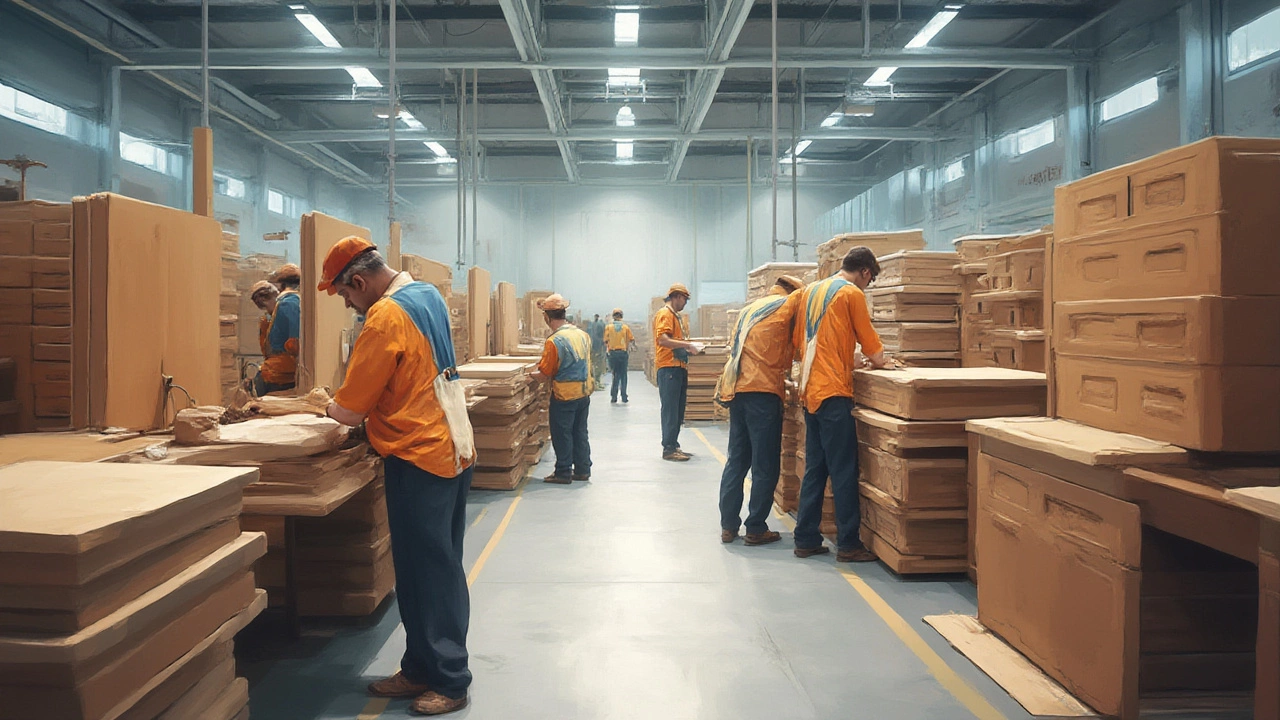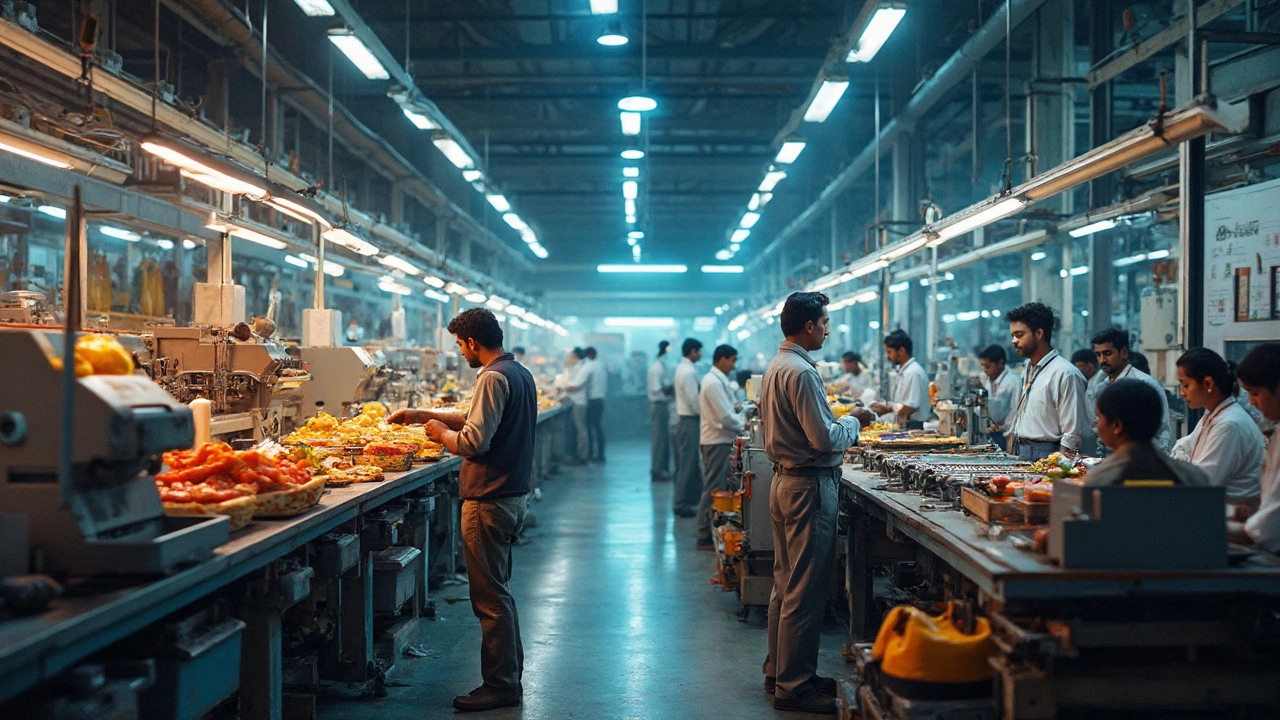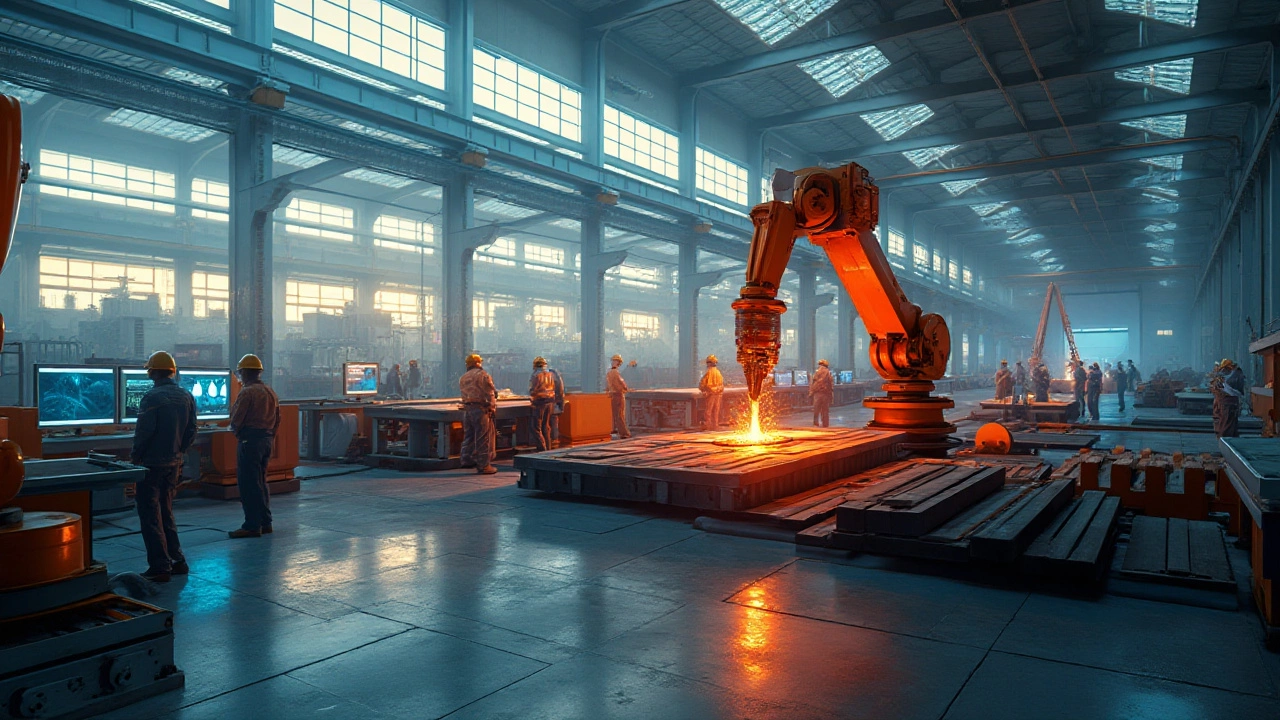Where Is Ashley Furniture Made? Inside Ashley's Global Manufacturing Secrets

Ashley Furniture isn’t just a big name in the furniture game—the company lives in its own league. If you’ve ever walked through an Ashley showroom or even scrolled their vast online catalog, have you stopped for a second and thought, 'Where on earth do they make all this stuff?' The truth is, Ashley has built an empire by manufacturing furniture in places you might expect and quite a few you wouldn't. This isn’t just about price tags either. Their global manufacturing strategy shapes everything from the quality and availability of their products to how quickly your dream couch ends up in your living room.
The World of Ashley: Factories, Origins, and Big-League Scale
Start with this: Ashley Furniture runs the largest furniture manufacturing operations in the world. We're talking about ten massive manufacturing and distribution facilities spread across the globe. That’s not marketing fluff—Ashley actually cut its teeth on U.S. soil, starting out back in 1945 in Chicago, before planting a firm flag in Arcadia, Wisconsin. But if you picture a folksy American workshop churning out all those plush recliners and farmhouse tables, you’re missing the real story. Ashley’s U.S. sites in Wisconsin, Mississippi, North Carolina, Pennsylvania, Florida, California, and Texas are a central hub, especially for sofas and sectionals. They invest heavily in machinery and logistics—some U.S. plants alone run for nearly a million square feet of space, with thousands of workers on each shift.
But let’s get real: at Ashley's insane scale, just making furniture in the U.S. isn’t enough. Production stretches way beyond American borders. China, Vietnam, and Cambodia are big players in Ashley’s global factory roster, especially for the bedroom sets, accent pieces, and a hefty lineup of home goods that fill their showrooms. For instance, a credenza you see at your local Ashley showroom probably spent part of its "childhood" on a factory floor in Ho Chi Minh City or Guangdong before getting loaded on a cargo ship. While Ashley doesn't publish a country-by-country breakdown for every single product, industry data and import/export stats from U.S. Customs show that as of 2024, nearly half of Ashley’s furniture sold in North America was manufactured in Vietnam or China.
Why mix U.S. and overseas sites? It's all about efficiency. Different regions specialize in different products, based on labor, logistics, and raw materials. For instance, frames and heavier items—think big sofas, dressers—are often made closer to Ashley’s U.S. customers, while detailed woodwork (like headboards or coffee tables) might come from Asia, where the craftsmanship and costs have kept prices competitive without totally tanking quality. This mix means Ashley can keep a huge variety in stock and get it into homes faster. In fact, the company even uses a hybrid approach: some domestic factories finish or upholster pieces that start out abroad.
To get a sense of how this shakes out, check out this breakdown (based on public reports and industry insights as of 2024):
| Country/Region | Main Products | Estimated Share |
|---|---|---|
| USA | Sofas, sectionals, mattresses | 38% |
| China | Bedroom sets, tables, cabinets | 27% |
| Vietnam | Bedroom furniture, accent pieces | 17% |
| Cambodia | Occasional furniture, woodwork | 9% |
| Other (Mexico, India, etc.) | Dining sets, specialty items | 9% |
If you’re curious about a specific piece, flip it over or peek underneath—most Ashley products will have a manufacturing label. If it matters to you whether your new dresser came from Mississippi or My Tho, don’t be shy about asking when you’re at the showroom. The sales staff usually knows, and if not, customer service can dig it up for you.

Quality, Price, and Sourcing: What It Means For Your Living Room
The elephant in the room: does Ashley’s mix of U.S. and offshore manufacturing make a difference in quality? The answer isn’t one-size-fits-all. Ashley built its brand on delivering that "look for less"—furniture that tracks trends, feels solid in your living room, and doesn’t drain your wallet. This business model leans hard on mixing large-volume runs and global sourcing, which helps with prices and variety, but also makes their supply chain extra complex.
So how does this affect what arrives at your home? For heavier, upholstered items like couches and recliners, you’re much more likely to end up with something made in the States. These pieces benefit from local assembly, shorter shipping times, and for some, stricter quality oversight. It’s not just patriotic spirit; oversized furniture costs more to ship halfway across the world. Plus, U.S. plants are known for advanced automation (think of robots sewing upholstery or huge CNC machines stamping out frames), combined with hands-on skill from experienced craftsmen. That combo keeps the quality up even with large production numbers.
But let’s talk hardwoods and fancy finishes. For everything from ornate headboards and accent cabinets to dining tables, Ashley leans on a deep bench of partner factories in Asia. Vietnam in particular has exploded in the last decade as a furniture powerhouse, partly because of trade-war tariffs against China and the search for lower labor costs. Ashley’s Vietnamese factories now crank out mid-range wooden and composite furniture at a clip few U.S. facilities can match. The woodworking can actually be pretty impressive, though quality varies—stick to solid wood or veneers if longevity’s a top priority, since composites can chip or dent more easily.
There’s one more trade secret: Ashley is vertically integrated from factory floors to delivery trucks. They control everything—buying timber, running sawmills, shipping by their own trucks, even working out deals with local harvesters. This way, they safeguard costs, tweak designs fast, and keep their shelves loaded. It also means they can spot and fix problems directly, instead of relying on third-party contractors to iron out the kinks. No wonder Ashley can launch dozens of new collections every year while keeping prices well below boutique brands.
- Tip: If you’re particular about where your furniture comes from, don’t just trust the website. Look for a “Made in USA” or “Assembled in USA” label if you want domestic pieces; for imports, you’ll usually see China, Vietnam, or Cambodia.
- Tip: Ask about construction. Solid wood frames and thick plywood generally outlast composite or particle board—no matter where it’s made.
- Tip: If speed matters, ask if the piece is "In Stock" at a local warehouse or needs to ship from overseas. U.S. factory items usually deliver faster.
- Tip: Join Ashley’s loyalty club or sign up for sale alerts. Their big manufacturing scale means they can run serious promotions, especially around holidays and back-to-school seasons.
If you've ever heard a friend complain about an Ashley piece not holding up, don't write off the brand. Most returns and customer service calls trace back to specific series or imported specialties. The bread-and-butter living room sets or signature collections generally do their job pretty well, especially if you avoid the rock-bottom "promo" lines aimed at outfitting rental units.

Behind the Curtain: Ethical Sourcing and Sustainability at Ashley
Now folks are asking loftier questions than just "Is this couch comfy?"—like, what’s going on with the people making all this stuff, and is it good for the planet? Ashley isn’t running a tiny workshop, so their choices impact thousands of workers and the big supply chain. The facts here can get a bit complicated, but here’s what you need to know.
Ashley’s main U.S. plants focus on fair wages and safety standards—think modern automation, ergonomic stations, and regular audits. For overseas operations, Ashley’s official line is that they stick to international labor laws and routinely audit partners. They’re part of the Sustainable Furnishings Council, and they publish annual corporate responsibility reports with stats about employee training, green initiatives, and raw material sourcing. Keep in mind, transparency only goes so far. Third-party research (like reports from 2023 and 2024 on large furniture producers) found Ashley making steady progress in recycling and waste reduction, especially at Stateside factories. Ashley claims to sustainably source most of its lumber and to cut down on emissions by running its own shipping fleets. A 2024 survey put Ashley among the top five U.S. furniture giants for reforestation efforts, with millions of dollars spent on tree-planting projects every year.
But—here's the rub—external auditors and watchdog groups have, from time to time, flagged issues in international plants, especially in the fast-growing Vietnam and Cambodia hubs. Common concerns deal with overtime pay, working hours, or supply chain transparency. When these pop up, Ashley tends to investigate and address them, but like many firms with massive global operations, total oversight can be challenging. If this stuff matters to you, dig into their latest responsibility report, and keep an eye out for third-party watchdog ratings.
Sustainability is gaining real traction. For instance, almost every Ashley mattress is now CertiPUR-US certified, which means it’s made without ozone depleters, heavy metals, or flame retardants—with domestic production meeting stricter U.S. chemical guidelines. Their plants are shifting to solar and energy-efficient systems where possible, and in 2024, Ashley boasted that nearly 40% of its packaging uses recycled materials. The push towards “fast furniture” has a price—cheap, disposable decor that doesn’t last—but Ashley tries to keep the balance by investing in new product lines made with reclaimed woods or recyclable upholstery.
So where does all of this leave you, the buyer? Ashley’s manufacturing game is all about scale and smart logistics. You’re paying for the vast options, reasonable prices, and (usually) prompt delivery. The company uses its muscle to push for better jobs and sustainability, but it’s still a mass-market player, not a boutique craftsman shop. Whether you care about origin labels or want to shop green, there’s more info than ever if you’re willing to look—and a showroom manager at your local Ashley will probably have the answers if you ask the right questions.
Next time you put your feet up on an Ashley ottoman, give a thought to the global trek it took to reach your living room. Whether it rolled out of a high-tech plant in Mississippi or a bustling workshop in Vietnam, that couch is basically a passport in your living room. Crazy world, right?





